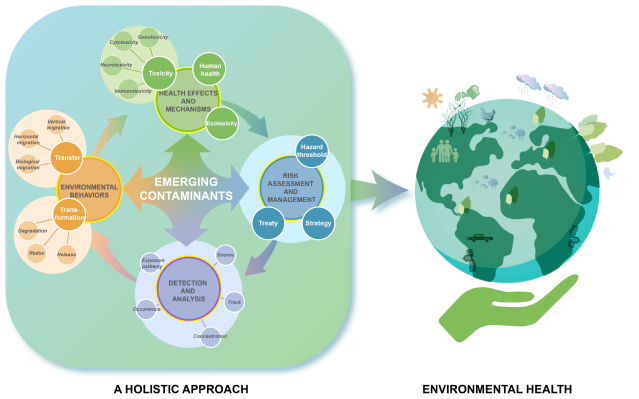
Highlights
Lessons learned from ENMs study provide a paradigm for other emerging contaminants.
Health risks depend on multiple environmental factors, media and organisms.
Environmental health research should be conducted in natural environments.
A holistic approach is advocated to ensure risk assessment and management.
Call for research on ecological and human health effects of emerging contaminants.
Abstract: Research on environmental health of emerging contaminants is critical to understanding their risks before causing severe harm. However, the low environmental concentrations, complex behaviors, and toxicology of emerging contaminants present enormous challenges for researchers. Here, we reviewed the research on the environmental health of engineered nanomaterials (ENMs), one of the typical emerging contaminants, to enlighten pathways for future research on emerging contaminants at their initial exploratory stage. To date, some developed pretreatment methods and detection technologies have been established for the determination of ENMs in natural environments. The mechanisms underlying the transfer and transformation of ENMs have been systematically explored in laboratory studies. The mechanisms of ENMs-induced toxicity have also been preliminarily clarified at genetic, cellular, individual and short food chain levels, providing not only a theoretical basis for revealing the risk change and environmental health effects of ENMs in natural environments, but also a methodological guidance for studying environmental health of other emerging contaminants. Nonetheless, due to the interaction of multiple environmental factors and the high diversity of organisms in natural environments, health effects observed in laboratory studies likely differ from those in natural environments. We propose a holistic approach and mesocosmic model ecosystems to systematically carry out environmental health research on emerging contaminants, obtaining data that determine the objectivity and accuracy of risk assessment.
Keywords: Emerging contaminants; Engineered nanomaterials; Holistic approach; Mesocosmic systems; Natural environments
DOI: 10.1016/j.eehl.2022.10.001